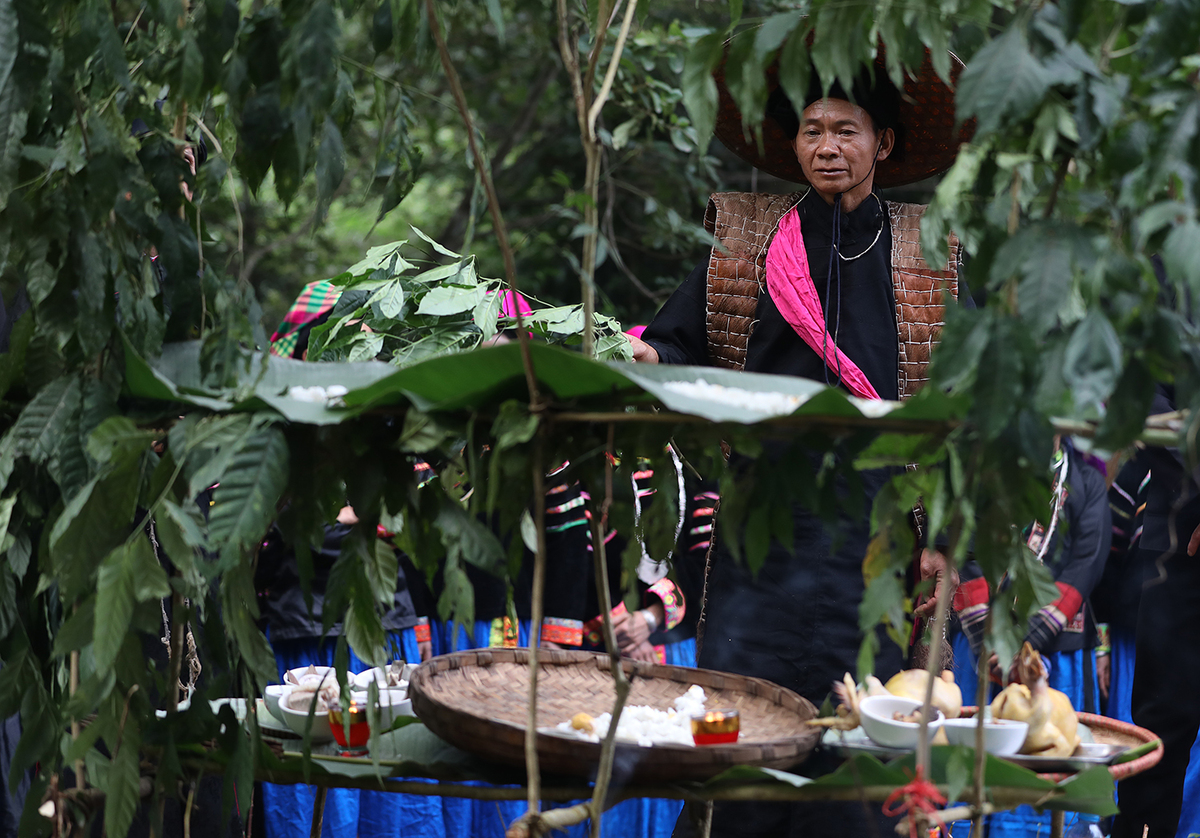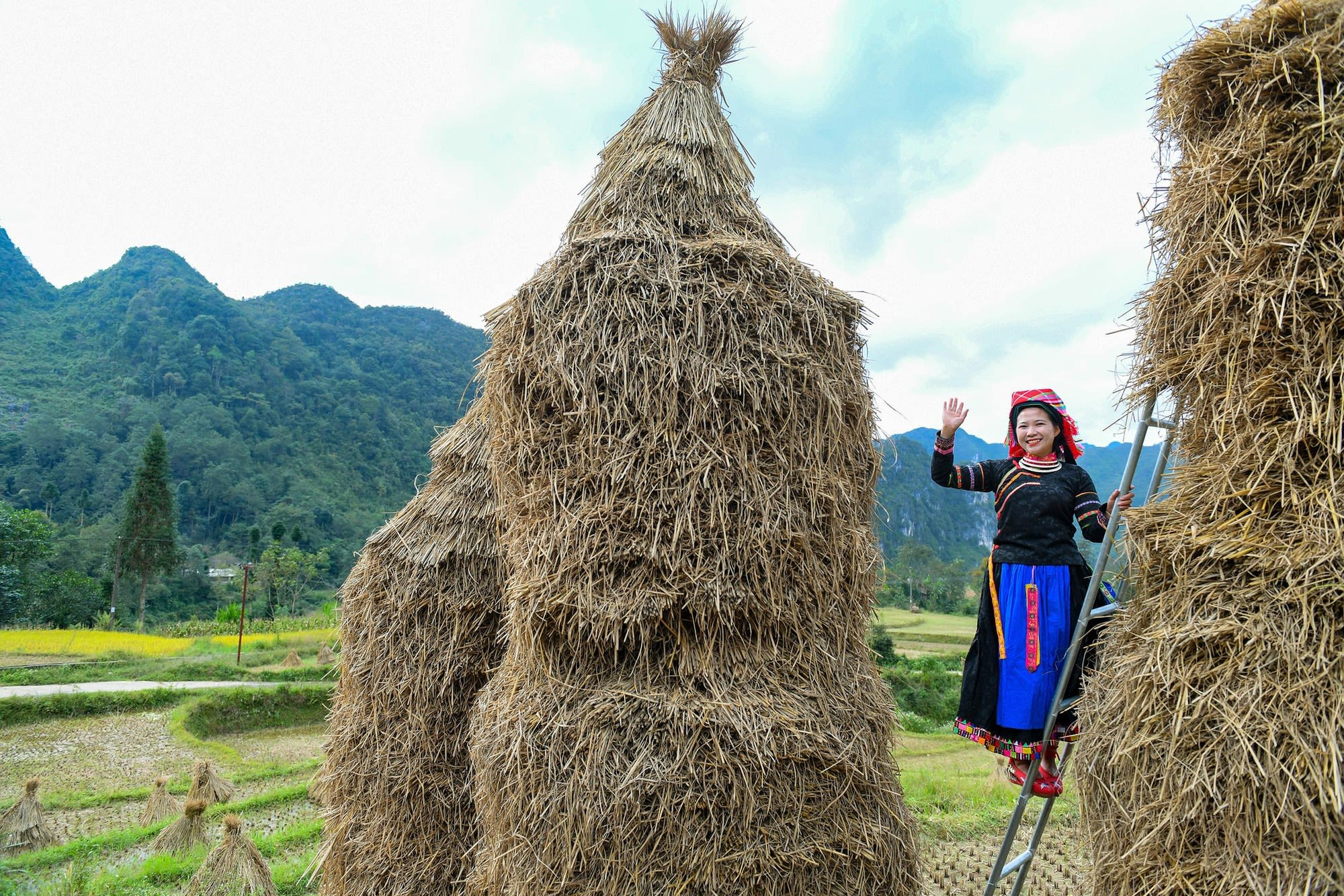
The Pu Peo ethnic minority group has only 903 people and is the 3rd least populous ethnic group out of 54 ethnic minority groups in Vietnam, which have long resided in the northernmost region of Vietnam (Ha Giang province).
1. Origin
The Pu Peo people have long lived in the northernmost region of Vietnam. They resided in Ha Giang before the 18th century, while another part of the Pu Peo people came to Vietnam later, around the late 18th century and the beginning of the 19th century.
2. Geographical distribution
The Pu Peo people are now present in 20 out of 63 provinces and cities in Vietnam. They are mainly residing in the provinces of Ha Giang, Tuyen Quang, and Dong Nai, as well as in Ho Chi Minh City.
3. Population, language
Population: According to the 2019 survey on 53 ethnic minority groups, there were 903 Pu Peo people, including 467 males and 436 females, who mainly live in Ha Giang province.
Language: The Pu Peo people speak the Tay-Thai language which is closer to the Tay-Nung language. In the Tay-Nung language, “Pu” means “person” while “Peo” is a misnomer of the former name “Ka Bao”.

The Pu Peo people worship the forest god. (Photo: vnexpress.net)
The Pu Peo people worship the forest god. (Photo: vnexpress.net)
4. Main features
The Phu La people live mainly in the northern mountainous provinces such as Lao Cai, Ha Giang, Son La, Lai Chau, Yen Bai, and Dien Bien.
Traditional social institutions: A village head is the oldest person in a village who has prestige and experience in behaviour, understands customs and practices, and can hold the role of a shaman to preside over offerings in the village. A village head is elected among household heads in the village. They manage all work related to daily life and production, as well as play a spiritual role for people in the village.
Religion, belief: Cosmology. The Pu Peo people believe that the world consists of three tiers: heaven, earth and underworld. The human look is different in each tier. They believe that ancestral spirits are always above and people live below.
Regarding the concept of the soul, the Pu Peo believe that, with living objects, the soul exists in the body. It is the energy that creates form and life. The human soul is somewhat more complex than the soul of all species. It is not only the element that creates the body and life, but also shapes the personality, behaviour, emotions, and spirit of a person. The Pu Peo people believe that each person has eight souls and nine astrals.
Some rituals in religious life: the ceremony of worshipping the forest god (ngoangxau), the ceremony of starting a new crop (pat oong), the ceremony of getting rid of pests, the new rice celebration ceremony, the new rice offering ceremony, and others.
Housing: Building a house is one of the great jobs of a person’s life. The old people believe that the success or failure of each family life and each individual depends a lot on their house. Thus, there are many beliefs regarding the house of the Pu Peo people, from land selection to the construction process and the ritual to move into a new house.

A Pu Peo woman in the traditional costume (Photo: THANH DAT)
A Pu Peo woman in the traditional costume (Photo: THANH DAT)
Costume: Pu Peo women often wear a black dress, with a bib outside. The dress is decorated by putting coloured pieces of fabric together. Their hair is tied on top of the head, pinned with a wooden comb and covered with a square scarf decorated with colourful patterns. Pu Peo women’s clothes have three parts: shirt, skirt, and bib.
Pu Peo men often wear indigo-dyed clothes or blue shirts and black pants. Pu Peo men’s shirts are longer than the knee with the front lap about 15cm shorter than the back lap. Men’s clothes are special as the cuffs are about 30-40cm wide. This shirt is worn on holidays, New Year, weddings, and funerals. Men’s shoes are often self-stitched with black fabric and shells from bamboo trees.
Cuisine: The food in the meals of the Pu Peo people are mainly crop products such as rice and maize. From these two main food, they prepare many different dishes: rice, porridge, soup and cake. In addition, they also grow other plants such as galangal and buckwheat.
Food used in the daily meals of Pu Peo people is mainly vegetables, beans, gourds, and squashes. They especially like to eat boiled dishes dipped in fish sauce or chilli salt in addition to vegetable soups.
Some of the main dishes in the daily meal of the Pu Peo people include: Rice, boiled dishes, stir-fried, soup, and pork hung up in the kitchen.
Beverages: Besides the usual drinks like many other ethnic groups, the Pu Peo people have some typical drinks that are water combined with herbs (roots and leaves of forest trees and tea leaves) and alcohol. The most typical type of wine is corn wine (pau hu) cooked with leaf yeast.
Education: According to the 2019 survey of 53 ethnic minority groups, the percentage of people aged 15 years and over who can read and write is 83%, the net attendance rate for children of primary school age is 100%, the junior secondary school age is 100%, and of the senior secondary school age is 72.3%.

The Pu Peo people have two main forms of cultivation: field cultivation and upland cultivation. (Photo: THANH DAT)
The Pu Peo people have two main forms of cultivation: field cultivation and upland cultivation. (Photo: THANH DAT)
5. Economic conditions
The Pu Peo people have two main forms of cultivation: field cultivation and upland cultivation, depending on the natural conditions of each residential area. Animal husbandry is an important economic form of Pu Peo families. They raise many kinds of livestock and poultry such as buffalo, cow, pig, goat, dog, cat, chicken, duck, geese, pigeons, and bees.
The Pu Peo people know how to do many crafts such as weaving, carpentry, knitting, forging, brick and tile making, corn winemaking, and others. However, handicraft products are mainly to serve the daily needs of families, rather than becoming commodities. Many professions are tending to be lost.
Trading activities among the Pu Peo people have existed for a long time, to obtain products that their self-sufficient economy cannot supply. They participate in trading activities in many forms, such as going to markets, opening grocery stores, and cross-border trading.